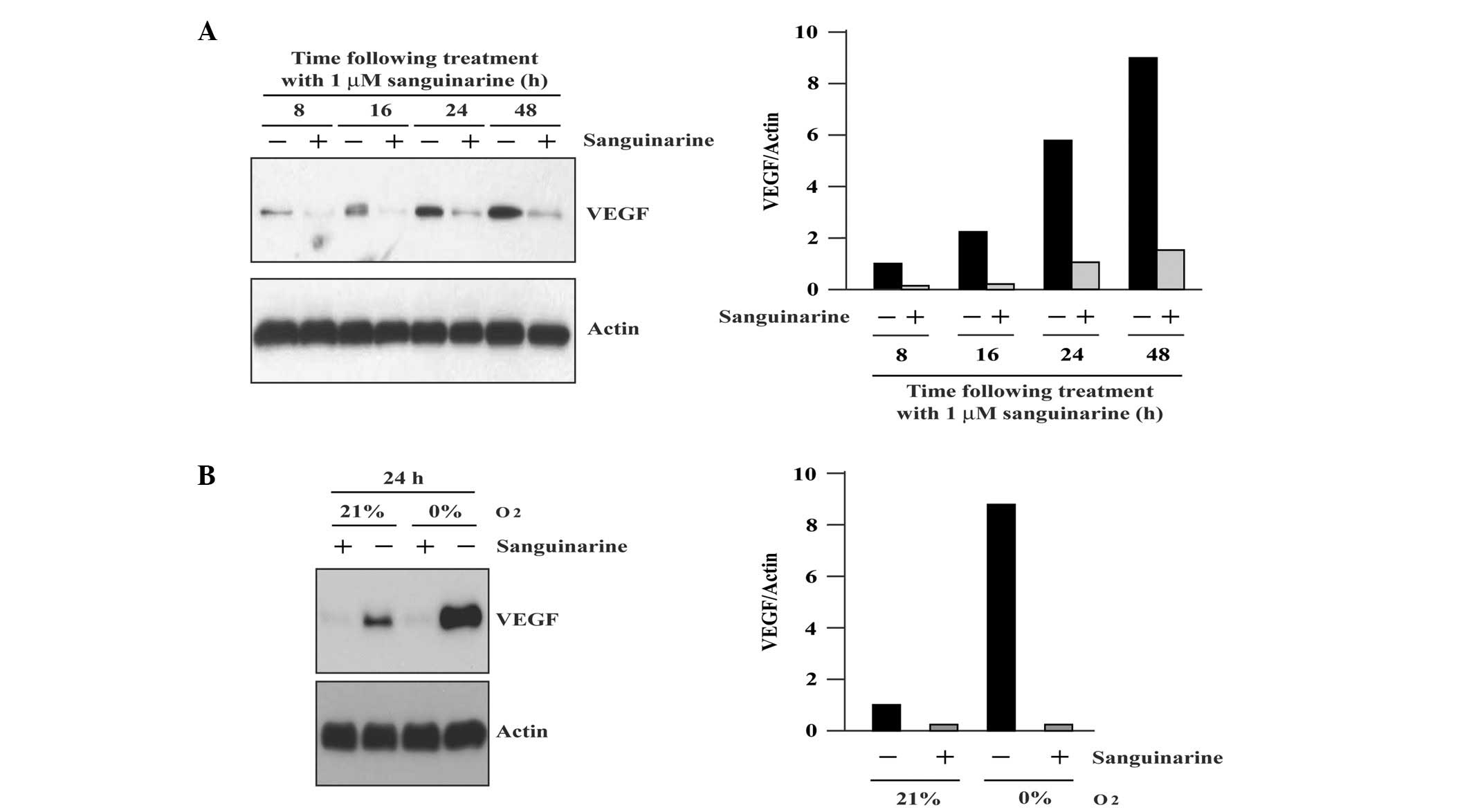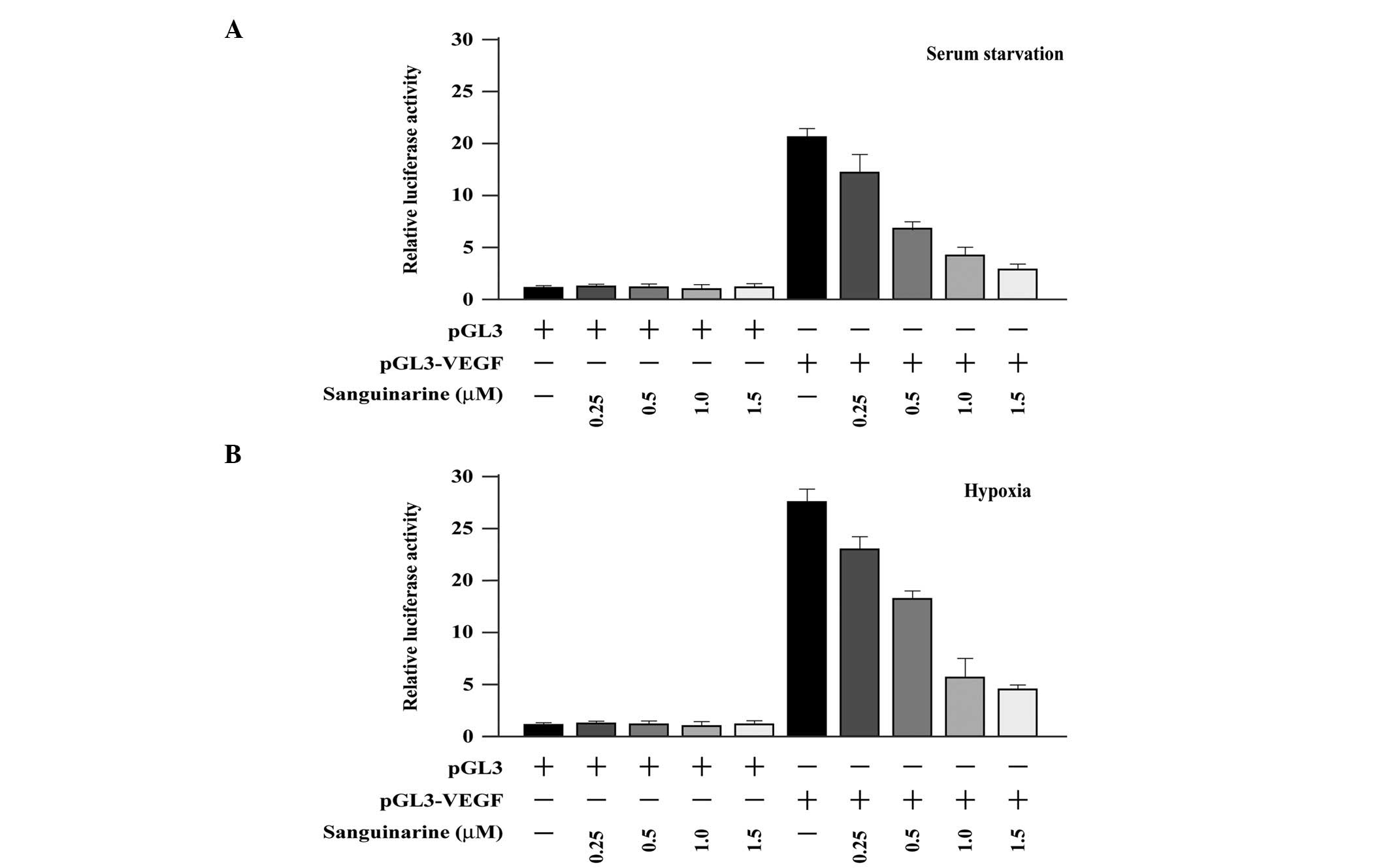|
1
|
Carmeliet P and Jain RK: Molecular
mechanisms and clinical applications of angiogenesis. Nature.
473:298–307. 2011. View Article : Google Scholar : PubMed/NCBI
|
|
2
|
Ebos JM and Kerbel RS: Antiangiogenic
therapy: impact on invasion, disease progression, and metastasis.
Nat Rev Clin Oncol. 8:210–221. 2011. View Article : Google Scholar : PubMed/NCBI
|
|
3
|
Farhat FS, Tfayli A, Fakhruddin N, et al:
Expression, prognostic and predictive impact of VEGF and bFGF in
non-small cell lung cancer. Crit Rev Oncol Hematol. Apr
9–2012.(Epub ahead of print).
|
|
4
|
Das M and Wakelee H: Targeting VEGF in
lung cancer. Expert Opin Ther Targets. 16:395–406. 2012. View Article : Google Scholar
|
|
5
|
Aggarwal C, Somaiah N and Simon G:
Antiangiogenic agents in the management of non-small cell lung
cancer: where do we stand now and where are we headed? Cancer Biol
Ther. 13:247–263. 2012. View Article : Google Scholar : PubMed/NCBI
|
|
6
|
Blakely C and Jahan T: Emerging
antiangiogenic therapies for non-small cell lung cancer. Expert Rev
Anticancer Ther. 11:1607–1618. 2011. View Article : Google Scholar : PubMed/NCBI
|
|
7
|
Lind JS and Smit EF: Angiogenesis
inhibitors in the treatment of non-small cell lung cancer. Ther Adv
Med Oncol. 1:95–107. 2009. View Article : Google Scholar : PubMed/NCBI
|
|
8
|
Mackraj I, Govender T and Gathiram P:
Sanguinarine. Cardiovasc Ther. 26:75–83. 2008.
|
|
9
|
Sun M, Liu C, Nadiminty N, Lou W, et al:
Inhibition of Stat3 activation by sanguinarine suppresses prostate
cancer cell growth and invasion. Prostate. 72:82–89. 2012.
View Article : Google Scholar : PubMed/NCBI
|
|
10
|
De Stefano I, Raspaglio G and Zannoni GF:
Antiproliferative and antiangiogenic effects of the
benzophenanthridine alkaloid sanguinarine in melanoma. Biochem
Pharmacol. 78:1374–1381. 2009.PubMed/NCBI
|
|
11
|
Tsukamoto H, Kondo S, Mukudai Y, et al:
Evaluation of anticancer activities of benzo[c]phenanthridine
alkaloid sanguinarine in oral squamous cell carcinoma cell line.
Anticancer Res. 31:2841–2946. 2011.
|
|
12
|
Jang BC, Park JG and Song DK: Sanguinarine
induces apoptosis in A549 human lung cancer cells primarily via
cellular glutathione depletion. Toxicol In Vitro. 23:281–287. 2009.
View Article : Google Scholar : PubMed/NCBI
|
|
13
|
Eun JP and Koh GY: Suppression of
angiogenesis by the plant alkaloid, sanguinarine. Biochem Biophys
Res Commun. 317:618–624. 2004. View Article : Google Scholar : PubMed/NCBI
|
|
14
|
Basini G, Bussolati S, Santini SE and
Grasselli F: Sanguinarine inhibits VEGF-induced angiogenesis in a
fibrin gel matrix. Biofactors. 29:11–18. 2007. View Article : Google Scholar : PubMed/NCBI
|
|
15
|
Basini G, Santini SE, Bussolati S and
Grasselli F: Sanguinarine inhibits VEGF-induced Akt
phosphorylation. Ann N Y Acad Sci. 1095:371–376. 2007. View Article : Google Scholar : PubMed/NCBI
|
|
16
|
Basini G, Santini SE, Bussolati S and
Grasselli F: The plant alkaloid sanguinarine is a potential
inhibitor of follicular angiogenesis. J Reprod Dev. 53:573–579.
2007. View Article : Google Scholar : PubMed/NCBI
|
|
17
|
Pica F, Balestrieri E, Serafino A, et al:
Antitumor effects of the benzophenanthridine alkaloid sanguinarine
in a rat syngeneic model of colorectal cancer. Anticancer Drugs.
23:32–42. 2012. View Article : Google Scholar : PubMed/NCBI
|
|
18
|
Fan S, Ma YX and Wang C: p300 modulates
the BRCA1 inhibition of estrogen receptor activity. Cancer Res.
62:141–151. 2002.PubMed/NCBI
|
|
19
|
Choi YH, Choi WY, Hong SH, et al:
Anti-invasive activity of sanguinarine through modulation of tight
junctions and matrix metalloproteinase activities in MDA-MB-231
human breast carcinoma cells. Chem Biol Interact. 179:185–191.
2009. View Article : Google Scholar
|
|
20
|
Chang MC, Chan CP, Wang YJ, et al:
Induction of necrosis and apoptosis to KB cancer cells by
sanguinarine is associated with reactive oxygen species production
and mitochondrial membrane depolarization. Toxicol Appl Pharmacol.
218:143–151. 2007. View Article : Google Scholar
|














